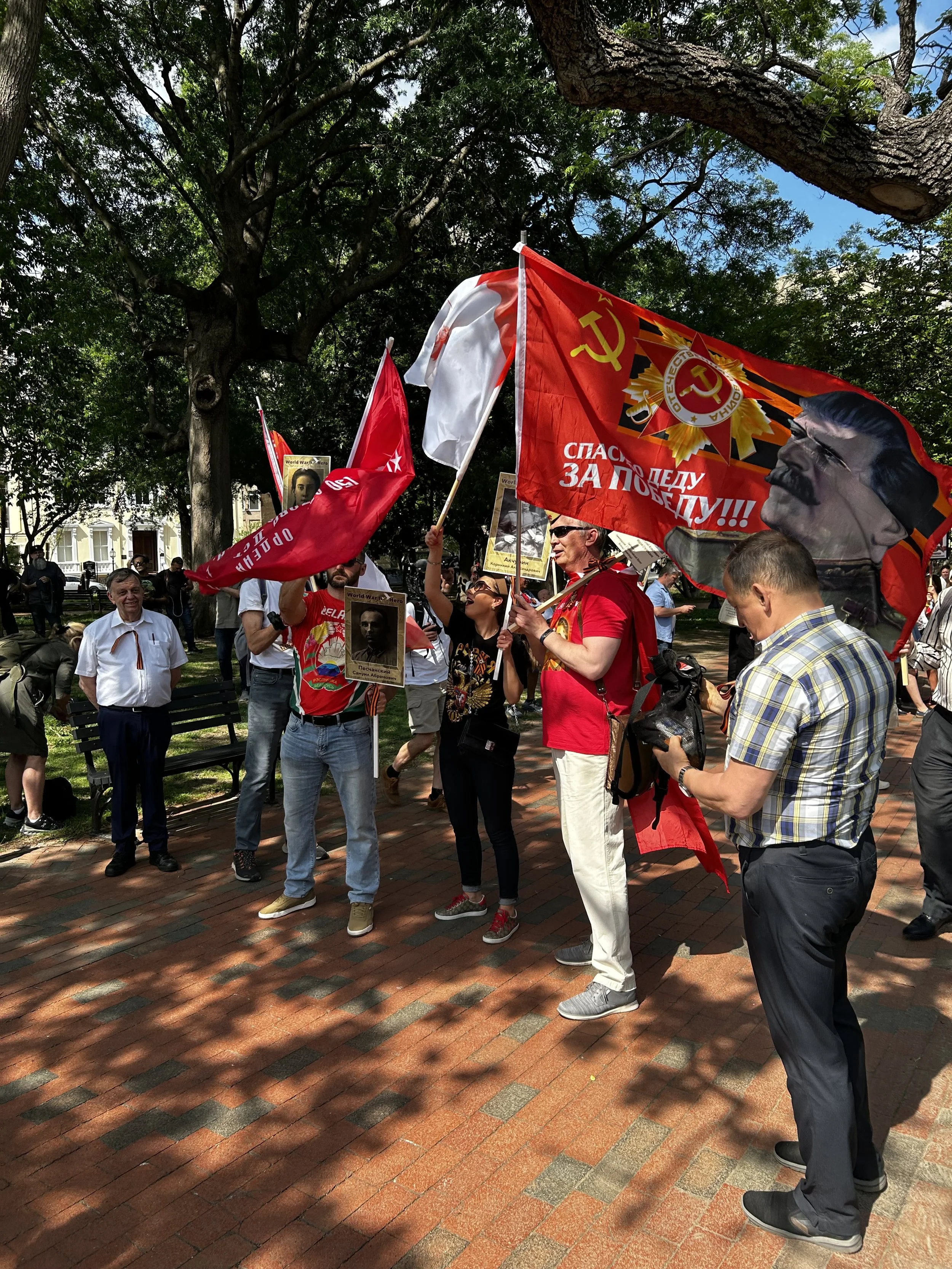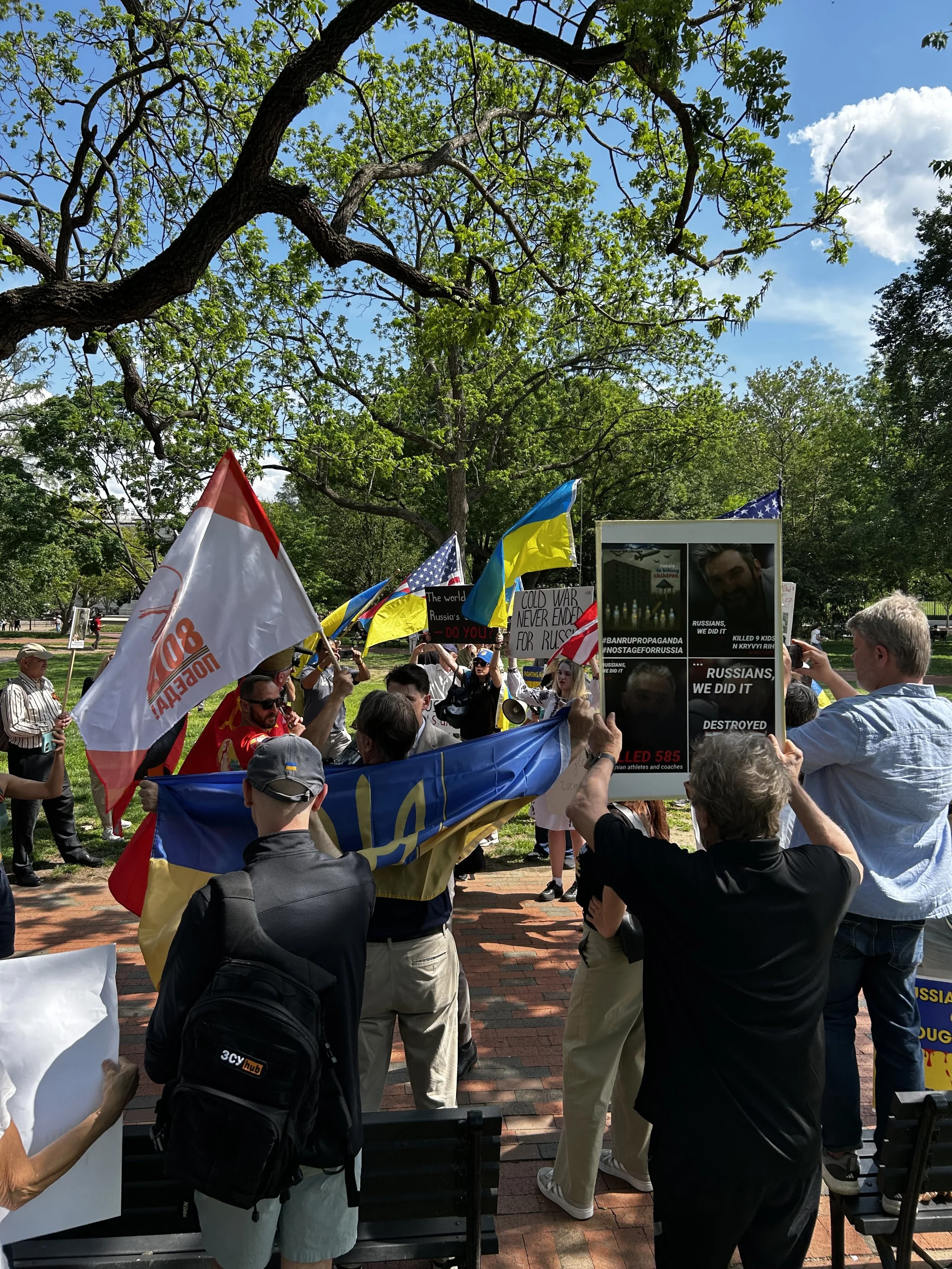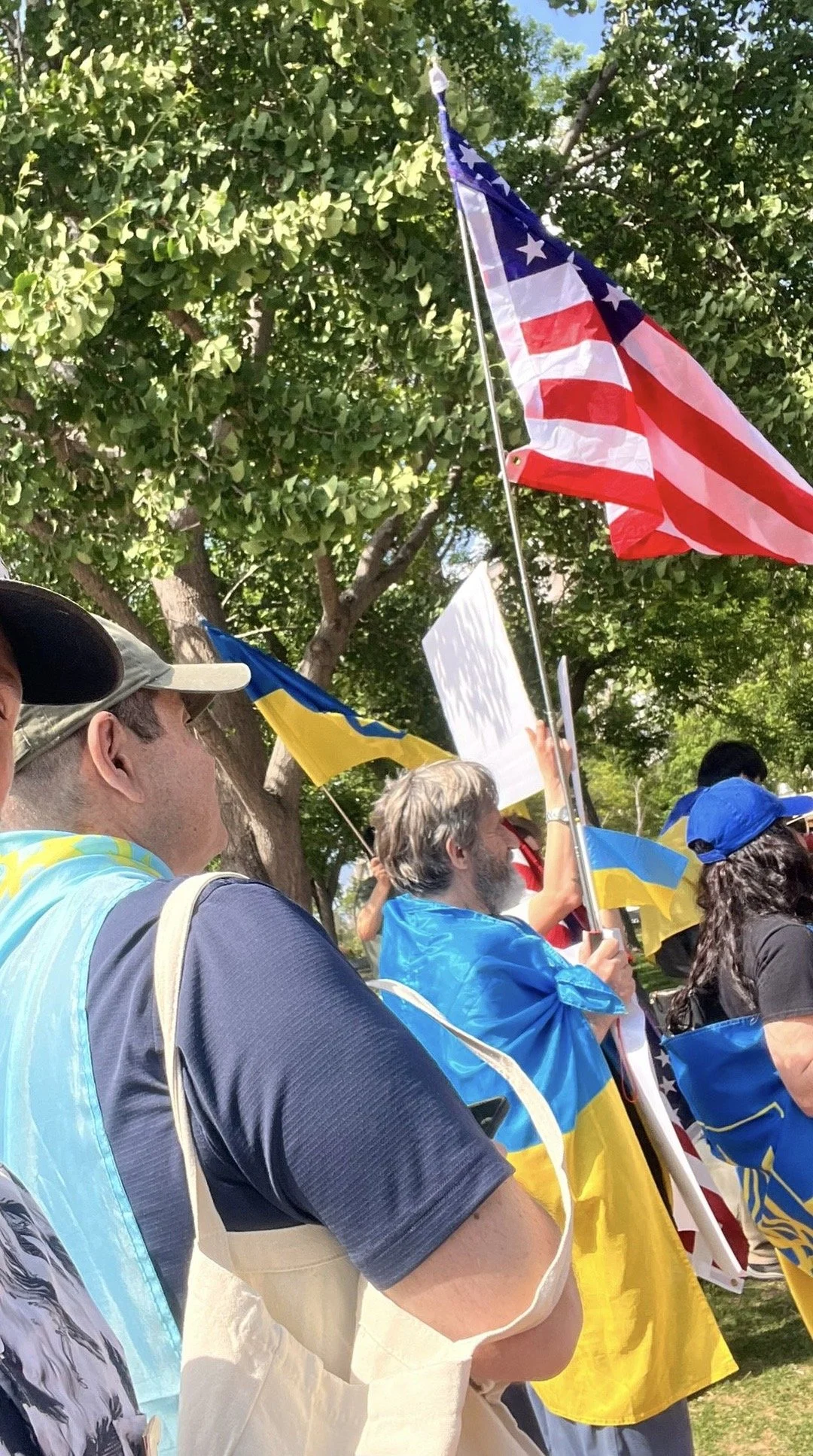Controversy Surrounds Immortal Regiment March in Washington, D.C.
By Nurul Rakhimbek
Washington, D.C. | May 4, 2025
On May 3, 2025, while Washington, D.C. celebrated international unity during Passport DC’s annual Embassy Open House, a separate event overshadowed the day’s festivities: the annual Immortal Regiment march. What began as a memorial to Soviet soldiers who fought in World War II has become increasingly controversial, especially this year, due to the prominent display of Joseph Stalin portraits and Soviet symbols such as the hammer and sickle.
Held just blocks from official diplomatic and cultural celebrations, the march sparked outrage from observers and members of diaspora communities who viewed the event as an inappropriate and politically loaded display, especially in light of the ongoing Russian invasion of Ukraine.
What Is the Immortal Regiment?
The Immortal Regiment originated in Russia in 2012 as a grassroots initiative to honor those who served in what Russians call the Great Patriotic War. Marchers carry photographs of relatives who fought against Nazi Germany, and the event has spread globally as a means of remembering personal and collective wartime sacrifices.
But as the Kremlin has grown increasingly authoritarian, critics argue the event has been co-opted to serve a nationalist, pro-war agenda—blending reverence for history with political messaging that defends or justifies contemporary Russian aggression.
Why the 2025 March in Washington Was Controversial
This year’s Immortal Regiment in Washington, D.C. drew attention—and alarm—for several key reasons:
Glorification of Stalin: Participants carried large portraits of Joseph Stalin, a dictator whose rule saw the execution, imprisonment, and starvation of millions. While Stalin was a central figure in the Soviet war effort, his legacy is widely condemned for mass repression, purges, and forced collectivization. For many in Eastern Europe, Central Asia, and the Baltics, Stalin is remembered not as a liberator, but as an oppressor.
Soviet Symbols: The hammer and sickle flag, along with other USSR-era insignia, were also displayed. For many, these symbols are reminders of imperial domination, forced Russification, and decades of authoritarian rule. In the heart of the U.S. capital, such imagery struck a deeply discordant note.
A Dangerous Message Amid Ongoing War: With Russia’s war in Ukraine still raging, many saw the event as a tone-deaf—if not deliberate—glorification of war and conquest. “It sends the message that war is not only acceptable, but admirable,” one attendee remarked. “That’s deeply disturbing in the middle of an active invasion.”
Concerns from Central Asian Diaspora
Beyond the Ukrainian and Eastern European communities, people originally from Kazakhstan and other former Soviet republics also expressed concern. Many see the growing visibility of Soviet-era symbolism as part of a broader pattern of Russian historical revisionism and soft power pressure over neighboring states.
“We came here to escape that kind of political narrative,” said a Kazakh-born resident of the United States who witnessed the march. “Watching Stalin’s face pass by in downtown Washington doesn’t feel like remembrance, it feels like propaganda.”
These concerns reflect a wider unease shared by post-Soviet diaspora groups who fear the resurgence of imperial nostalgia and its implications for regional sovereignty and identity.
A U.S. Perspective: Free Speech vs. Ethical Boundaries
While the U.S. Constitution protects the right to peaceful assembly and expression, including the use of controversial symbols, many Americans, especially those from countries once dominated by the Soviet Union, were shocked to see what they viewed as the glorification of tyranny.
In a country built on democratic principles and human rights, critics argue that the Immortal Regiment march, as currently practiced by some groups, goes beyond remembrance and edges into historical whitewashing.
Conclusion: A Cautionary Tale in the Capital
There is nothing inherently wrong with honoring the millions who perished in the fight against fascism. But when that commemoration includes the face of a dictator and the symbols of repression, the meaning changes. It becomes not a remembrance of victims, but a rehabilitation of power.
As war continues to unfold in Europe and as global alliances shift, what happened in Washington on May 3 is a reminder that history is not only remembered—it’s often weaponized. And that in honoring the past, we must be vigilant not to excuse or glorify its darkest chapters.



